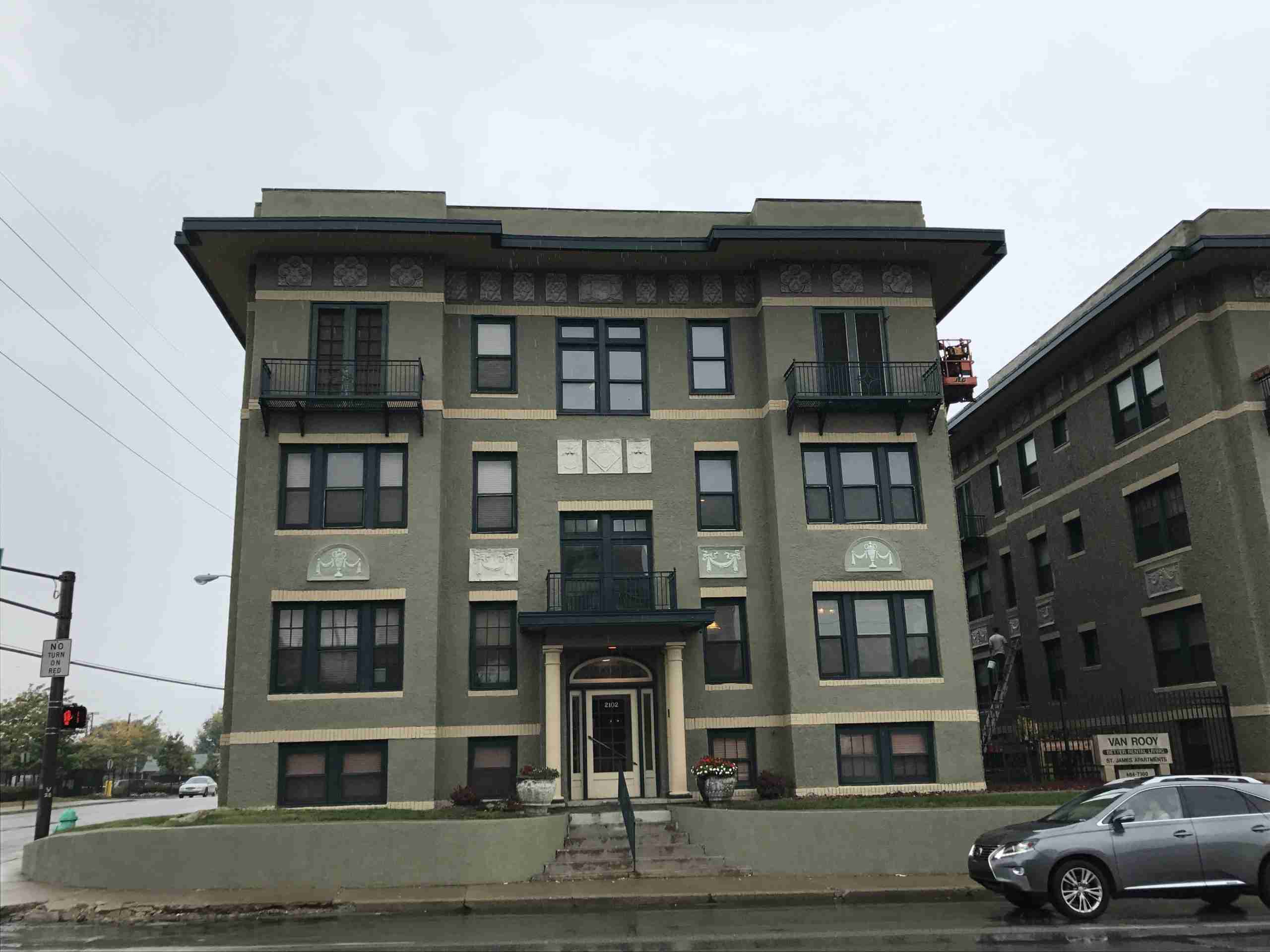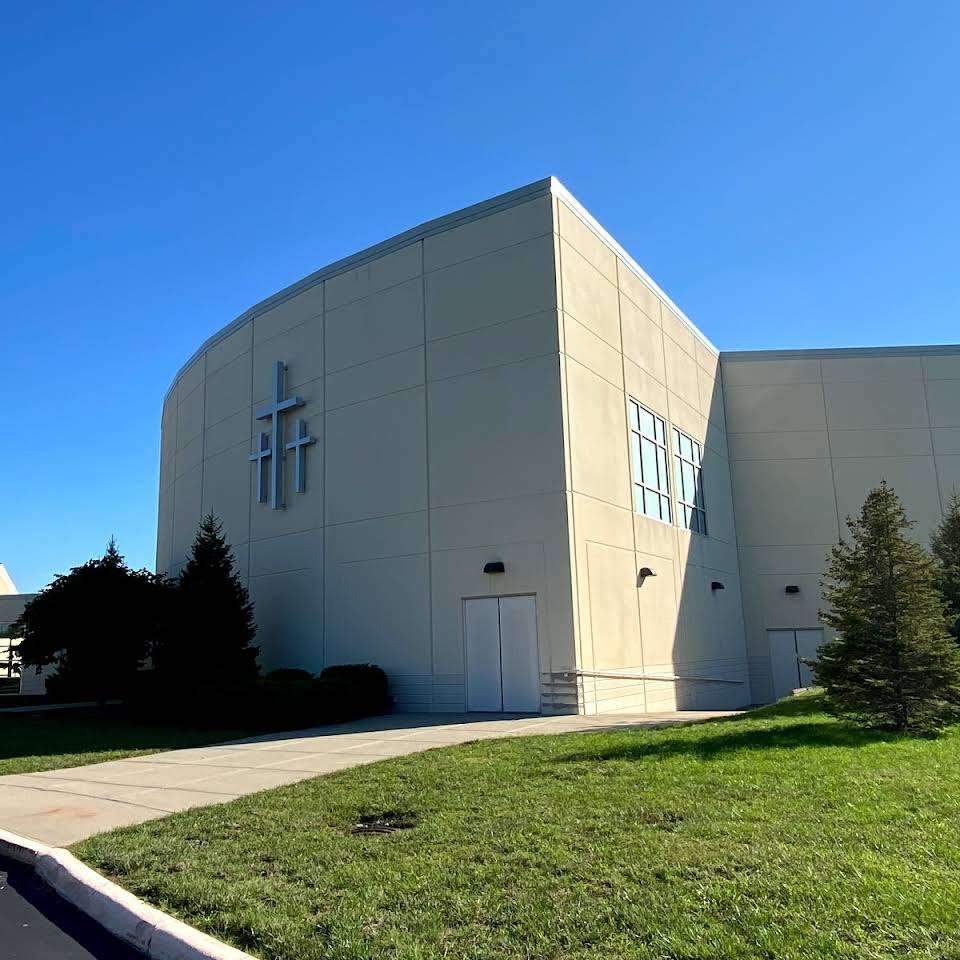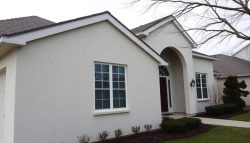Navigating the Intricacies of EIFS Installation: A Comprehensive Guide to Making the Right Choice
Exterior Insulation and Finish Systems (EIFS) have revolutionized the construction industry, providing an energy-efficient, cost-effective, and aesthetically pleasing solution for building exteriors. However, the installation of EIFS is not as straightforward as it may seem. It’s a complex process that requires a high degree of precision, in-depth knowledge of the system, and practical experience. While the idea of installing EIFS yourself may seem appealing, it’s crucial to understand the potential risks and challenges involved. This essay aims to delve into the intricacies of EIFS installation, comparing the DIY approach with professional services like Indiana Wall Systems, to help you make an informed decision.
Understanding EIFS Installation
EIFS is a multi-layered exterior wall system that consists of an insulation board secured to the exterior wall surface, a durable, water-resistant base coat applied on top of the insulation, and a finish coat that gives the system its unique aesthetic appeal. Each layer serves a specific purpose and contributes to the overall performance and durability of the system.
The installation process begins with the preparation of the wall surface, which must be clean, dry, and structurally sound. The insulation board, typically made of expanded polystyrene (EPS), is then attached to the wall using specially formulated adhesives or mechanical fasteners. This is followed by the application of the base coat, a mixture of cement and water-resistant polymers, reinforced with a fiberglass mesh for added strength and durability. The base coat serves as a weather barrier, protecting the insulation from moisture and impact damage. The final step is the application of the finish coat, which provides the desired texture and color to the system.
The complexity of EIFS installation lies in the precision required at each step. The insulation board must be securely attached to the wall to prevent air gaps that can compromise the system’s thermal performance. The base coat must be evenly applied and thoroughly cured before the finish coat is applied to ensure a durable, water-resistant barrier. The finish coat, meanwhile, requires a skilled hand to achieve the desired texture and appearance.
Improper installation can lead to a host of problems, from aesthetic issues like uneven texture and color to serious structural problems like water infiltration and mold growth. Therefore, while EIFS installation may seem like a feasible DIY project, it’s essential to consider the potential risks and challenges involved.
The Intricacies of EIFS Installation: A Task for the Experienced
The installation of an EIFS is not a simple task that can be accomplished with a few tools and a set of instructions. It is a meticulous process that demands a deep understanding of the system and its components, as well as the ability to accurately execute each step of the installation.
The first layer of the EIFS, the insulation board, is not just a matter of gluing panels to the wall. It requires careful measurement and cutting to ensure a snug fit against the wall surface, with no gaps or overlaps. The adhesive used to attach the insulation board must be applied evenly and in the right quantity to ensure a strong bond, but without excess that could create bulges or unevenness in the surface.
The application of the base coat is another critical step that requires precision and expertise. The base coat, reinforced with a fiberglass mesh, serves as the primary weather barrier in an EIFS. It must be applied evenly and at the correct thickness to ensure its effectiveness. Too thin, and it may not provide adequate protection against moisture. Too thick, and it could crack or peel. The fiberglass mesh must be fully embedded in the base coat and properly overlapped at the seams to provide a continuous, durable reinforcement.
The finish coat, which gives the EIFS its aesthetic appeal, is perhaps the most challenging part of the installation for a DIYer. It requires a skilled hand to apply the finish coat evenly and to achieve the desired texture. Any inconsistencies in the application can result in noticeable variations in color and texture, detracting from the overall appearance of the building.
Moreover, EIFS installation is not just about the application of the components. It also involves careful detailing around windows, doors, and other wall penetrations to prevent water intrusion, as well as the installation of appropriate flashings and drainage systems to manage any water that does get behind the system.
In short, EIFS installation is a complex process that requires a level of precision, knowledge, and experience that is beyond the scope of most DIY projects. The potential for errors and their associated costs, both immediate and long-term, make it a task best left to professionals like Indiana Wall Systems, who have the training, experience, and specialized tools to do the job right.
The Attraction of DIY EIFS Installation: A Closer Look
The idea of installing EIFS by oneself can be quite enticing. The prospect of saving on labor costs, the sense of accomplishment from completing a project with your own hands, and the freedom to work at your own pace are all factors that contribute to the allure of a DIY approach.
The Perceived Benefits of DIY EIFS Installation
The most obvious advantage of a DIY EIFS installation is the potential cost savings. By eliminating professional labor costs, homeowners might believe they can significantly reduce the overall cost of the project. This is particularly appealing at a time when many are looking for ways to save money on home improvements.
Another factor that draws people to DIY projects is the sense of personal satisfaction. There’s a certain pride that comes from completing a project with your own hands, from start to finish. For some, this personal achievement outweighs any potential challenges or risks.
The Availability of DIY Resources and Guides
In today’s digital age, there’s a wealth of information available at our fingertips. Online tutorials, step-by-step guides, and even video demonstrations make it seem like anyone can install EIFS. These resources can provide a basic understanding of the process and make it seem manageable, further fueling the desire to take on the project independently.
Case Studies of Successful DIY EIFS Installations
There are undoubtedly cases where DIY EIFS installations have been successful. These stories often highlight the homeowner’s ability to overcome challenges, learn new skills, and ultimately achieve satisfactory results. These success stories can be inspiring and may lead others to believe that they too can successfully install EIFS on their own.
However, it’s essential to remember that for every successful DIY story, there may be many more untold stories of failed attempts, costly repairs, and ongoing issues. The next section of this essay will delve into the potential risks and pitfalls of DIY EIFS installation, providing a more balanced perspective on this complex task.
The Hidden Dangers of DIY EIFS Installation: A Reality Check
While the idea of a DIY EIFS installation may seem appealing at first glance, it’s crucial to understand the potential risks and challenges involved. The complexity of the EIFS installation process, coupled with the severe consequences of improper installation, makes it a task that requires a high level of expertise and precision.
What Can Go Wrong with DIY EIFS Installation
The potential for error in a DIY EIFS installation is significant. As previously discussed, each step of the EIFS installation process requires a high level of precision and understanding. A minor error at any stage can lead to serious issues down the line.
For instance, improper attachment of the insulation board can lead to air gaps, compromising the thermal performance of the system. An uneven base coat can result in inadequate weather protection, leaving the system vulnerable to moisture and impact damage. Inconsistencies in the finish coat can lead to aesthetic issues, detracting from the overall appearance of the building.
The Consequences of Improper Installation
The consequences of improper EIFS installation can be severe and costly. One of the most common issues is water infiltration, which can lead to structural damage and mold growth. Not only can these issues compromise the integrity of the building, but they can also pose serious health risks.
Moreover, fixing these issues is often more costly and time-consuming than the initial installation. It may involve removing and replacing large sections of the EIFS, or in severe cases, the entire system. This can significantly increase the overall cost of the project, negating any savings from the DIY approach.
Case Studies of Failed DIY EIFS Installations
There are numerous examples of DIY EIFS installations gone wrong. These stories often involve homeowners who, despite their best efforts, ended up facing serious issues due to improper installation. These cases serve as a stark reminder of the potential risks and challenges involved in a DIY EIFS installation.
In conclusion, while the idea of a DIY EIFS installation may seem appealing, it’s essential to consider the potential risks and challenges involved. The next section of this essay will explore the benefits of professional EIFS installation, providing a compelling argument for why this is the recommended approach.
The Value of Professional EIFS Installation: An Investment Worth Making
While the DIY approach may seem attractive due to potential cost savings and the sense of accomplishment, the risks and complexities associated with EIFS installation make it a task best left to professionals. Let’s delve into the benefits of professional EIFS installation and why it’s a worthwhile investment.
The Expertise and Experience Professionals Bring to EIFS Installation
Professional EIFS installers, like Indiana Wall Systems, bring a wealth of knowledge and experience to the table. They have undergone extensive training to understand the intricacies of EIFS installation and are well-versed in the latest industry standards and best practices. They have the skills to accurately execute each step of the installation process, ensuring a high-quality result.
Professionals also have experience dealing with a variety of building types and conditions. They can adapt the installation process to accommodate unique architectural features, challenging weather conditions, and other variables that a DIYer might not be prepared to handle.
The Assurance of Quality and Durability with Professional Installation
When you hire a professional to install EIFS, you’re not just paying for their time and labor. You’re also investing in the peace of mind that comes from knowing the job will be done right. Professionals stand by their work and often offer warranties that cover defects and installation errors. This assurance of quality and durability is something you simply can’t get with a DIY installation.
Case Study: Indiana Wall Systems and Their Approach to EIFS Installation
Indiana Wall Systems is a prime example of a professional EIFS installer. They have a proven track record of delivering high-quality EIFS installations that stand the test of time. Their team of skilled installers takes pride in their work, paying close attention to detail and adhering to strict quality standards. They also offer comprehensive warranties, providing their clients with added peace of mind.
In conclusion, while the DIY approach may seem appealing at first glance, the benefits of professional EIFS installation far outweigh the potential cost savings. The expertise, experience, and assurance of quality that professionals bring to the table make them the clear choice for EIFS installation. The next section of this essay will further explore the cost-benefit analysis of DIY vs. professional EIFS installation.
DIY vs. Professional EIFS Installation: A Cost-Benefit Analysis
When considering whether to take a DIY approach or hire a professional for EIFS installation, it’s essential to conduct a thorough cost-benefit analysis. This involves looking beyond the initial costs and considering the long-term implications of each approach.
Short-Term and Long-Term Costs
The most apparent advantage of a DIY EIFS installation is the potential for immediate cost savings. By eliminating professional labor costs, the upfront expense of the project can be significantly reduced. However, this doesn’t take into account the potential for costly mistakes, the time investment required, or the expense of purchasing or renting the necessary tools and equipment.
On the other hand, while hiring a professional installer like Indiana Wall Systems may involve a higher upfront cost, it can save money in the long run. Professionals have the expertise to do the job right the first time, reducing the risk of costly repairs or replacements down the line. They also have access to professional-grade tools and materials, which can lead to higher quality and more durable installation.
Potential Savings vs. Potential Risks
While the potential savings from a DIY EIFS installation can be tempting, it’s crucial to weigh these against the potential risks. Improper installation can lead to serious issues such as water damage, mold growth, and structural problems. The cost of addressing these issues can far exceed the initial savings from the DIY approach.
In contrast, the cost of hiring a professional installer is an investment in the quality and durability of your EIFS. By ensuring the job is done right, you can avoid potential issues and enjoy the benefits of your EIFS for many years to come.
The Value of Peace of Mind
Beyond the financial considerations, there’s also the value of peace of mind. With a professional installation, you can have confidence that your EIFS has been installed correctly and will perform as expected. This peace of mind can be invaluable, particularly for a significant investment like an EIFS.
In conclusion, while a DIY EIFS installation may seem cost-effective at first glance, a thorough cost-benefit analysis reveals that the professional route is often the more prudent choice. The expertise, quality assurance, and peace of mind that professionals provide make them well worth the investment.
Conclusion: EIFS Installation – A Task for Professionals
As we reach the end of our exploration into the world of EIFS installation, it’s time to draw some conclusions. The journey has taken us through the intricate process of EIFS installation, the allure of the DIY approach, the potential pitfalls of taking on such a complex task without professional training, and the undeniable benefits of entrusting this task to professionals.
Recap of the Risks and Benefits of DIY and Professional EIFS Installation
The DIY approach to EIFS installation, while initially attractive due to potential cost savings and the sense of accomplishment, has significant risks. The complexity of the EIFS installation process, the precision required at each step, and the severe consequences of errors make it a task that requires a high level of expertise.
DIY installations can lead to serious issues such as water infiltration, mold growth, and structural damage. These problems are not only costly to fix but can also pose health risks and compromise the structural integrity of the building. Furthermore, the time and effort required to learn and execute the installation process, purchase or rent the necessary tools, and correct any mistakes should not be underestimated.
On the other hand, professional EIFS installation offers numerous benefits. Professionals bring a wealth of knowledge and experience to the task. They have the training to understand the intricacies of the process and the skill to execute each step with precision. They also have access to professional-grade tools and materials, which can lead to higher quality and more durable installation.
Professional installers, like Indiana Wall Systems, stand by their work and often offer warranties that cover defects and installation errors. This assurance of quality and durability is something you simply can’t get with a DIY installation.
Final Thoughts on Why Professional Installation is the Recommended Route
While the DIY approach may seem appealing at first glance, the potential risks and long-term costs make it a less desirable option. The installation of EIFS is a significant investment in your property. It’s not just about improving the aesthetic appeal of your building; it’s also about enhancing its energy efficiency, durability, and overall value.
Given the importance of this investment, it’s crucial to ensure it’s done right. Professional installers have the expertise to ensure a high-quality installation that will stand the test of time. They can identify and address potential issues before they become major problems, saving you time, money, and stress in the long run.
Encouragement for Readers to Seek Professional Help for EIFS Installation
If you’re considering EIFS for your property, I strongly encourage you to seek the help of a professional installer. While it may be tempting to try to save money with a DIY installation, the potential risks and long-term costs can far outweigh the initial savings.
Professional installers like Indiana Wall Systems can provide you with the peace of mind that your EIFS has been installed correctly and will perform as expected. They can guide you through the process, answer your questions, and ensure that your investment in EIFS is a success.
In conclusion, EIFS installation is a complex process that requires a high level of expertise and precision. While the DIY approach may seem appealing, the potential risks and challenges make it a task best left to professionals. So, when it comes to EIFS installation, the answer to the question “Should I or Shouldn’t I?” is clear: leave it to the professionals.



